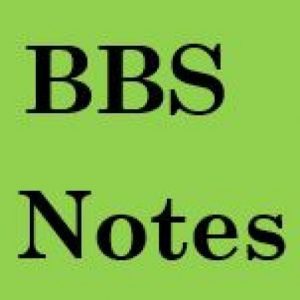We have detail information of TU BBA 5th Semester Syllabus and Subject List.
BBA 5th Semester Syllabus and Subject
Following are the detail information.
For PDF of all Subject Syllabus: CLICK HERE
Subject List
Following are the subject of BBA 5th Semester
| Name of the Subject | Subject Code | Lecture Hour | Credit Hour |
|---|---|---|---|
| Sociology for Business | SOC 201 | 48 LH | 3 CH |
| Basic Financial Management | FIN 202 | 48 LH | 3 CH |
| Corporate Taxation in Nepal | ACC 203 | 48 LH | 3 CH |
| Operations Management | MGT 205 | 48 LH | 3 CH |
| International Business | MGT 207 | 48 LH | 3 CH |
For PDF of all Subject Syllabus: CLICK HERE
Sociology for Business
Following are the syllabus of Sociology for Business.
| Chapters | Name of the Chapters | Lecture Hour |
|---|---|---|
| 1 | Introduction to Sociology | 4 LH |
| 2 | Basic Concepts in Sociology | 4 LH |
| 3 | Social Institutions | 4 LH |
| 4 | Social Processes | 4 LH |
| 5 | Social Stratification | 5 LH |
| 6 | Social Disorder, Deviance and Social Control | 2 LH |
| 7 | Social Change | 4 LH |
| 8 | Theoretical Perspectives in Sociology | 6 LH |
| 9 | Research Methods in Sociology | 5 LH |
| 10 | The Sociology of Management and Business Administration | 10 LH |
| Project Work (Specify the hours allocated to Unit 10) |
Basic Financial Management
Following are the syllabus of the Basic Financial Management.
| Chapters | Name of the Chapter | Lecture Hour |
|---|---|---|
| 1 | Introduction | 4 LH |
| 2 | Cost of Capital | 6 LH |
| 3 | Capital Budgeting | 8 LH |
| 4 | Capital Structure | 8 LH |
| 5 | Dividend Policy | 8 LH |
| 6 | Working Capital Management | 10 LH |
| 7 | Financial Planning and Forecasting | 4 LH |
Operations Management
Following are the syllabus of the Operations Management.
| Chapter | Name of the Chapter | Lecture Hour |
|---|---|---|
| 1 | Introduction | 6 LH |
| 2 | Operations Strategy | 3 LH |
| 3 | Product and Service Design | 5 LH |
| 4 | Locations decision and Facilities layout | 5 LH |
| 5 | Linear programming | 10 LH |
| 6 | Aggregate planning | 4 LH |
| 7 | Inventory Management | 4 LH |
| 8 | The Quality System | 8 LH |
International Business
Following are the syllabus of International Business.
| Chapter | Name of the Chapter | Lecture Hour |
|---|---|---|
| 1 | Globalization and International Business | 6 LH |
| 2 | Theories of International Trade and Investment | 8 LH |
| 3 | Global Business Environment | 12 LH |
| 4 | International Strategic Management | 10 LH |
| 5 | Functional Areas of International Business | 12 LH |
Corporate Taxation in Nepal
Dollowing are the syllabus of Corporate Taxation in Nepal.
| Chapter | Name of the Chapter | Lecture Hour |
|---|---|---|
| 1 | Basic Concept | 2 LH |
| 2 | Definition of Basic Terms | 4 LH |
| 3 | Classification and Status of Tax Payer (Assesses) | 2 LH |
| 4 | Quantification, Allocation and Characterization | 2 LH |
| 5 | Tax Exemptions, Concessions, Deduction, Tax Rates, Tax Credit and Set off Los | 4 LH |
| 6 | Meaning and Classification Sources of Incomes | 2 LH |
| 7 | Income from Business | 10 LH |
| 8 | Income from Employment (Remuneration) | 8 LH |
| 9 | Tax Administration, Assessment, Tax Audit, Appeals and Penalties | 4 LH |
| 10 | Value Added Tax | 7 LH |
| 11 | Customs and Excise Duty | 3 LH |
Hence, these are the BBA 5th Semester Syllabus and Subject.
If you have notes of any semester of BBA than you can donates it to us. It will be very helpful people who do not have notes for exam preparation. They can easly know the structure of the question in the exams.
For More Details Visit Us: CLICK HERE
Other Imorthant Links:
a. BBA 5th Semester Exam Routine: CLICK HERE
Frequently Asked Questions
a. List of Subject Name of BBA 5th Semester.
= Following are the subject list:
- Sociology for Business
- Basic Financial Management
- Corporate Taxation in Nepal
- Operations Management
- International Business












